Did you know that up to 30% of evergreen trees in northern climates suffer from winter burn each season? Winter can be harsh—not just for us but for our beloved landscapes too. Each year, thousands of trees and shrubs face damaged foliage, dying branches, and stunted growth due to winter burn. If you take pride in your yard’s greenery or manage public landscapes, understanding winter burn prevention for trees is vital. This comprehensive guide reveals the risks, symptoms, and expert techniques you need to ensure your evergreens and deciduous trees make it through winter vibrant and healthy.
Startling Facts: Why Winter Burn Prevention for Trees Is Critical
"Did you know that up to 30% of evergreen trees in northern climates suffer from winter burn each season?" – National Tree Care Association
The Importance of Winter Burn Awareness in Trees and Shrubs
When winter sets in, the risks to trees and shrubs multiply. Winter burn poses a silent yet significant threat, especially to evergreen shrub species and young deciduous trees. As harsh winter sun and cold winds strip moisture from leaves and needles while the ground freezes, the root system cannot absorb replacement water. This process causes water loss and tissue dieback, creating brown, brittle foliage visible by early spring. Unfortunately, this damage doesn't just fade with warmer months; it weakens plants, affecting their ability to photosynthesize and resulting in slower recovery and growth. That’s why early intervention and a strong understanding of winter injury can save your green investments.
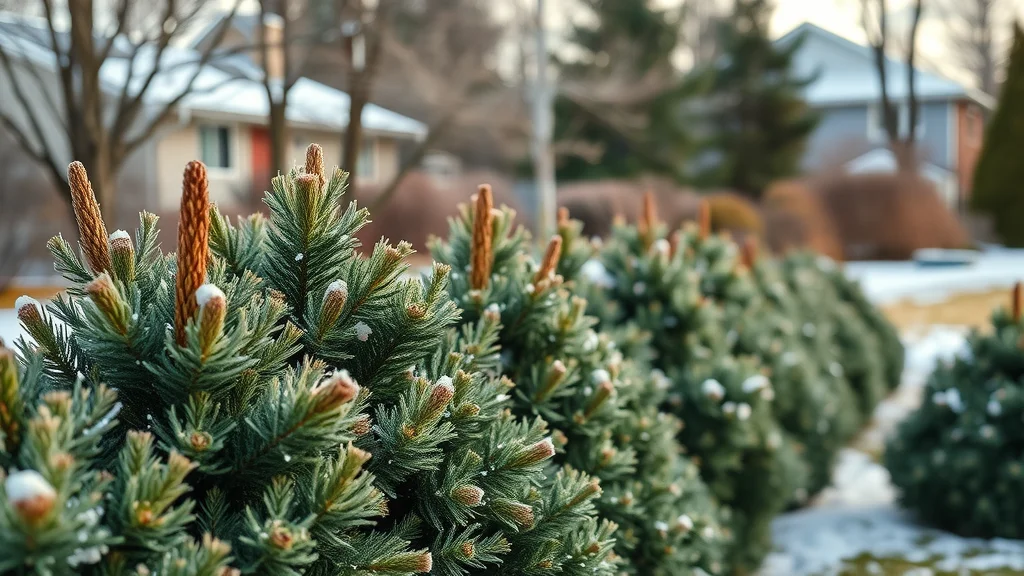
Impact of Winter Burn on Evergreen Shrubs and Deciduous Trees
Evergreen shrubs and deciduous trees each face distinct threats. Evergreens experience visible needle tip browning and sometimes extensive needle drop. Deciduous trees may lose buds or develop splits in bark due to uneven soil temperature changes and late winter freeze-thaw cycles. Both suffer from water loss when the ground is frozen, but effects are particularly severe in evergreens, which retain foliage all winter and continue to transpire. Over time, repeated winter injury weakens the root systems and shortens the life span of your green plants. Protecting your landscape is about more than aesthetics—it's about the long-term health of your ecosystem.
While winter burn is a major concern for tree health, it's important to recognize that severe weather events can also pose significant risks to both landscapes and personal safety. For a closer look at how extreme storms can impact homeowners and communities, see the tragic toll of severe storms in St. Louis and the importance of increased safety measures.
What You’ll Learn About Winter Burn Prevention for Trees
Essential winter burn prevention techniques
Identifying early signs of winter injury
How to protect plants, trees and shrubs in harsh climates
Expert tips for soil temperature management
Understanding Winter Burn: Causes and Risks for Trees and Shrubs
What is Winter Burn and How Does It Affect Evergreen Shrubs?
Winter burn is a form of winter injury caused mainly by moisture loss when a plant root system is unable to replenish what’s lost from leaves and needles. During sunny but cold winter days, evergreens lose water through transpiration, but frozen soil blocks roots from absorbing more. The result is browned needle tips, crispy leaves, and thinning canopies, especially on the side of the plant most exposed to winds and sun. Evergreen species such as arborvitae, yews, and boxwoods are especially susceptible to winter burn, which can be costly to repair and sometimes fatal for young or stressed plants. Preventing winter burn means keeping the delicate balance of moisture and temperature in check even before winter begins.
Common Causes of Winter Injury in Trees and Shrubs
The primary triggers of winter injury include fluctuating soil temperatures, low humidity, and intense winds or winter sun. Rapid temperature changes can damage plant tissue. When the ground freezes, water loss through leaves and needles can’t be replaced, causing injury and browning. Trees and shrubs planted in exposed, windy, or unprotected locations are more at risk. Late summer drought, poor soil preparation, and lack of protective mulching also compound the risks. Learning to spot these causes in your yard enables you to intervene early and save your green plants before harm sets in.
Comparison of Tree Species Susceptible to Winter Burn |
||
Tree or Shrub Species |
Symptoms |
Recovery Potential |
|---|---|---|
Boxwood (Evergreen shrub) |
Bronzed leaves, leaf drop, dieback |
Moderate to high (if pruned and mulched early) |
Arborvitae (Evergreen shrub) |
Needle browning, dead tips, side injury |
High if caught early, low if repeated annually |
Spruce/Fir (Evergreen tree) |
Needle discoloration, thinning, browning on south or southwest side |
High with proper hydration and protection |
Maple (Deciduous tree) |
Bark cracking, bud loss, dieback of twigs |
Good if winter injury is minor, pruning recommended |
Recognizing Winter Burn on Different Trees and Shrubs
Symptoms of Winter Burn on Evergreen Shrubs
Look for browning needle tips and desiccated foliage, especially on leaves and needles facing the prevailing wind or the late afternoon sun. These damaged areas feel dry and brittle, and the plant may look faded or patchy amidst the snow cover. Sometimes, whole branches will lose foliage and die back by early spring. This damage is a red flag, signaling water loss that is likely to progress deeper into the plant tissue if not addressed. Regular inspection after the harshest winter conditions can help catch winter burn early and guide you in applying remedial practices to save your evergreen plants.
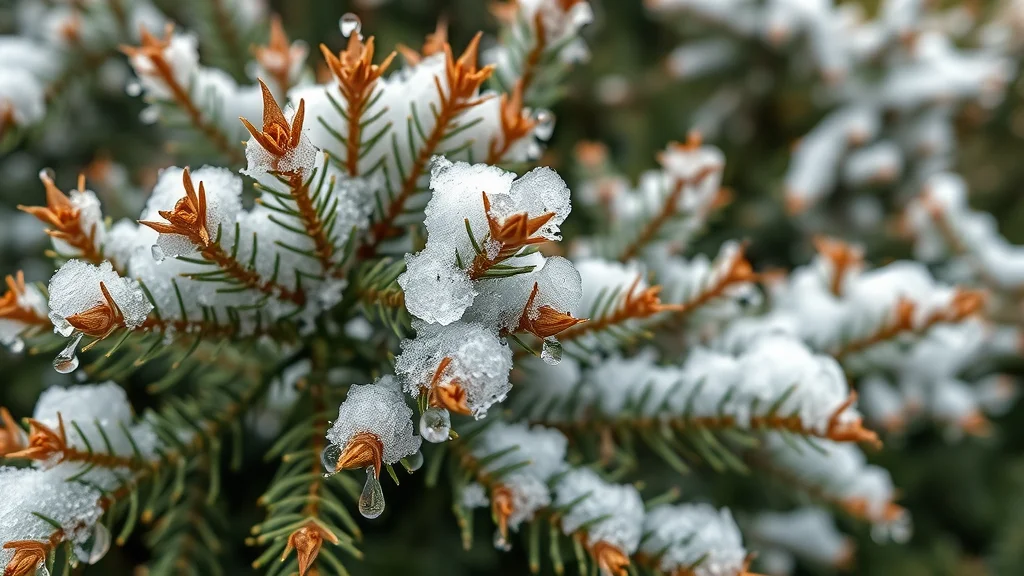
How Winter Burn Manifests in Deciduous Trees
While deciduous trees typically lose their leaves in fall, they are not immune to winter injury. Winter burn may reveal itself in split bark, especially around the trunk’s base—a result of rapid temperature shifts, particularly on the tree's south or southwest side. Buds may fail to open come spring, and in severe cases, entire small branches die. These signs are particularly prevalent after winters with little snow cover, as snow insulates root systems and modulates soil temp. Early detection and careful pruning can help your trees recover and flourish in the seasons that follow.
The Role of Late Summer Weather and Soil Temperature in Winter Burn
Late summer is a crucial period for bolstering trees and shrubs against winter burn. Extended drought, insufficient watering, or excessive late-season fertilization can compromise root systems, decreasing their ability to withstand freezing and thawing cycles. Continuous extremes in soil temperature make plants more vulnerable by disrupting dormancy. Monitoring and managing soil temperatures in late summer, therefore, primes your landscape’s defenses and directly ties into the success of winter burn prevention efforts.
-
Checklist: Early warning signs of winter injury
Discolored or bronzed evergreen needles
Bark cracks or splits on trunks and branches
Dieback of branch tips
Wilted or dried leaf buds (deciduous trees)
Uneven browning on side of the plant exposed to sun and wind
Key Factors Influencing Winter Burn Prevention for Trees
Protecting Plants by Managing Soil Temperature and Moisture
Mulching in late fall stabilizes soil temperatures, holds soil moisture, and shields plant root systems from abrupt temperature swings. Organic mulch—laid 2-4 inches deep—acts as an insulator, preventing both freezing and thawing cycles that disrupt root function. It's not just about keeping soil warm on sunny winter days—it’s about minimizing harmful fluctuations that tax the plant’s energy reserves. Consider using straw, wood chips, or shredded bark, and extend mulch to the plant’s drip line for best coverage. This practice prevents water loss and promotes healthy root overwintering.
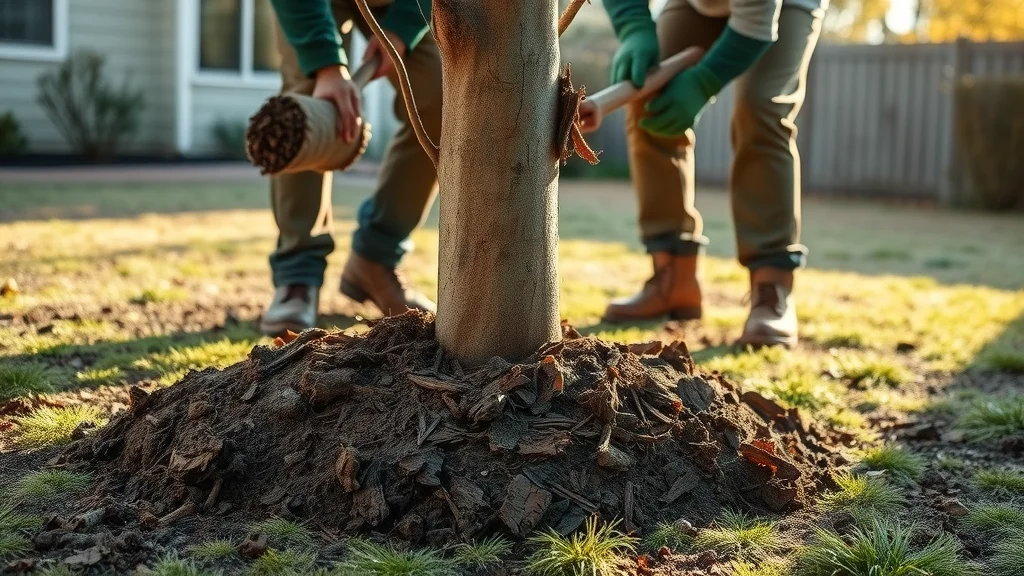
Site Selection and Shelter for Trees and Shrubs
Site selection plays a significant role in mitigating winter damage. Choose planting locations that offer natural shelter from prevailing winter winds or artificial barriers like fences and windbreaks. Trees and shrubs situated on protected sides of buildings or behind larger hedges fare better than those exposed to open wind. Pay attention to the side of the plant most likely to bear the brunt of winter sun and stormy conditions. Well-selected sites reduce the risk of moisture loss and maximize the success of further winter burn prevention methods.
The Importance of Proper Watering Before Winter
Consistent, deep watering during late summer and early fall ensures trees and shrubs have ample moisture as they enter dormancy. Hydrated plants are far less susceptible to winter injury because their root systems can better withstand the stress of dry winds or frozen soil. Be cautious not to overwater, as saturated soil can harm roots during fluctuating soil temperatures. Focus watering efforts before freezing conditions arrive and gradually slow down as autumn ends.
Best Practices for Winter Burn Prevention for Trees
Preparing Evergreen Shrubs and Deciduous Trees in Late Summer
Late summer sets the stage for winter survival. Avoid late-season fertilization, as this encourages tender new growth prone to winter burn. Instead, focus on irrigation and mulching prior to the first frost. Applying an anti-desiccant spray to evergreen shrubs can reduce moisture loss during dry, windy conditions. Assess plants for disease, ensuring your green plants are healthy—strong plants recover from winter injury much more successfully than stressed or diseased ones.
Mulching and Soil Temp: Creating a Protective Barrier
The best mulching practices directly correspond to stable soil temperatures. Spread organic mulch evenly around the root zone, but avoid direct contact with trunks or stems to prevent rot and disease. Mulching helps protect plants not just from cold, but also from spring freezing and thawing cycles that lead to root heaving. A continuous 2-4 inch layer shields sensitive plant roots, ensuring moisture retention during peak winter months and setting the stage for vigorous spring growth.

Practical Steps to Protect Plants from Winter Injury
To prevent winter burn, carefully wrap sensitive trunks and branches in burlap or use commercial tree wraps that allow airflow. For newly planted deciduous trees and evergreen shrubs, consider using windbreaks or screens to protect from drying winds and winter sun. Remove wraps in early spring to prevent disease and allow for new growth. Regularly inspect trees and shrubs throughout winter for signs of stress or damage, offering timely intervention when necessary.
Seasonal Winter Burn Prevention Checklist |
|
Season |
Prevention Actions |
|---|---|
Late Summer |
Water deeply, avoid excess fertilization, inspect for disease, start planning protection strategies |
Autumn |
Apply mulch, wrap trunks, prune dead wood, set up windbreaks |
Early Winter |
Check mulch coverage, monitor moisture, deploy tree wraps if needed |
Late Winter/Early Spring |
Remove wraps, prune away any damaged branches, fertilize as needed |
Recommended Materials for Wrapping and Shielding Trees and Shrubs
What to Wrap Trees With for Winter Burn Prevention
For effective winter burn prevention, use burlap, specialized commercial tree wrap, or plastic tree guards. Burlap is favored for its breathability—protecting from strong winds and winter sun, while allowing air flow and preventing rot. Commercial wraps often provide added insulation and UV protection. Make sure wraps are secured but not too tight and always start at the base, spiraling upward. Always remove wraps promptly in early spring to prevent moisture build-up and new growth distortions.
Types of Tree Guards and Protective Covers
There are numerous options for shielding trees and shrubs—from breathable wraps and plastic mesh guards to portable fabric windbreaks and rigid shields for small ornamentals. Select covers that offer both insulation and air circulation, avoiding materials that trap moisture or create overheating during intermittent thaws. Assess your landscape needs, choosing flexible protection for younger trees and robust wraps or barriers for mature, prize specimens.

"Burlap and breathable wraps provide the best balance of insulation and airflow for protecting sensitive bark and evergreen shrubs." – Horticulture Specialist
Correcting and Repairing Winter Burn: Steps for Recovery
How to Fix Winter Burn on an Evergreen
Come early spring, assess all evergreen shrubs for injured needles and branches. Gently prune away any damaged or dead tissue to promote airflow and reduce disease risk. Use clean, sharp pruning tools, and cut branches just above healthy buds or needles. Following harsh winters, supplement with deep watering once the ground thaws, and refresh mulch to support the recovering root system. In some cases, a slow-release balanced fertilizer can jump-start spring growth, but avoid high-nitrogen doses that prompt weak, tender tissue.
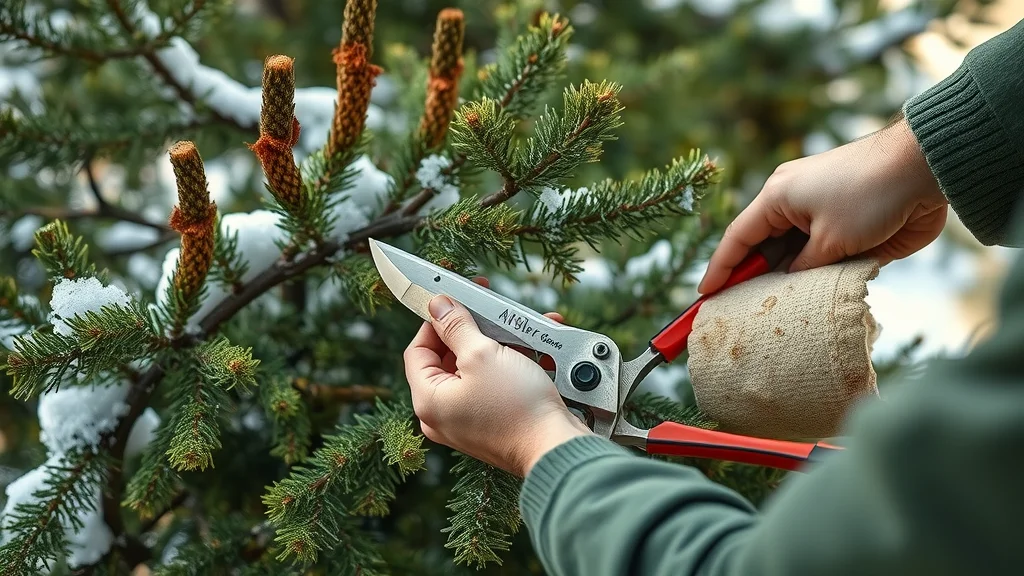
Pruning, Fertilizing, and Hydration After Winter Injury
Winter-damaged trees and shrubs need thoughtful aftercare. Remove all discolored or wilted growth and monitor for lingering signs of disease. Avoid fertilizing until you see stabilizing new growth. Ensure soils remain evenly moist—not waterlogged—as growth resumes in spring. If you notice extensive dieback, consult an arborist or horticulturist to gauge recovery prospects and potential additional interventions needed.
-
Symptoms not to ignore when diagnosing winter injury
Multiple branches losing needles or buds
Unusual cracks or sap bleeding from bark
Whole plant yellowing or failing to flush new growth by mid-spring
Common Mistakes in Winter Burn Prevention for Trees (and How to Avoid Them)
Improper Wrapping and Overwatering Risks
Common pitfalls include wrapping too tightly—leading to rot—or using plastic films that trap moisture and foster fungal disease. Overwatering in the late fall causes saturated soil and root suffocation when the ground freezes. Always use breathable wraps and let soil moisture gradually decline before deep freezes to ensure healthy root systems.
Overlooking Soil Temperature and Mulching Efficacy
Neglecting to mulch or using inadequate materials can result in harmful freezing and thawing cycles. Too little mulch exposes roots to rapid soil temp swings; too much mulch may hold excess moisture and cause decay. Monitor and adjust mulch as needed throughout the winter and double-check protection after each storm or temperature plunge.
-
Top 5 winter burn prevention pitfalls:
Skipping late summer preparation
Improper or insufficient mulching
Using non-breathable wraps or covers
Overwatering before hard freezes
Neglecting to inspect and act on early warning signs of winter injury
Expert Advice: Q&A on Winter Burn Prevention for Trees and Shrubs
How to fix winter burn on an evergreen?
Gently prune affected branches in spring, ensure proper watering, and apply mulch to promote recovery and prevent further winter injury.
What to wrap trees with for winter?
Use burlap, commercial tree wrap, or plastic tree guards that allow airflow but block harsh wind and sun exposure.
How do you keep trees from dying in the winter?
Water deeply in fall, apply mulch to moderate soil temp, wrap vulnerable trunks, and avoid late summer fertilization that can spur tender growth.
What is winterburn?
Winterburn refers to leaf or needle desiccation and browning in trees and shrubs caused by winter conditions—often wind and sun exposure when the soil is frozen.
Watch our visual walk-through explaining each step—spotting symptoms, mulching, watering routines, trunk wrapping, and using the right protective covers for every tree and shrub in your landscape.
Key Takeaways: The Essentials of Winter Burn Prevention for Trees
Early action in late summer reduces the risk of winter burn
Watch soil temperature and moisture closely for top protection
Strategic wrapping and proper site selection are vital steps
Conclusion – Strengthen Your Defense Against Winter Burn
"Investing in winter burn prevention for trees saves landscapes year after year."
By taking these practical, proactive measures, you’ll keep your evergreens, deciduous trees, and shrubs thriving—no matter how harsh the winter.
As you continue to safeguard your landscape from winter burn, remember that nature’s unpredictability can bring even greater challenges. Severe storms and extreme weather events can have devastating effects on both your trees and your community. To deepen your understanding of broader landscape risks and discover strategies for homeowner safety during turbulent weather, explore the story of resilience and lessons learned from the severe storms that struck St. Louis. Expanding your knowledge in this way empowers you to protect not just your greenery, but your home and loved ones as well.
 Add Row
Add Row  Add
Add 

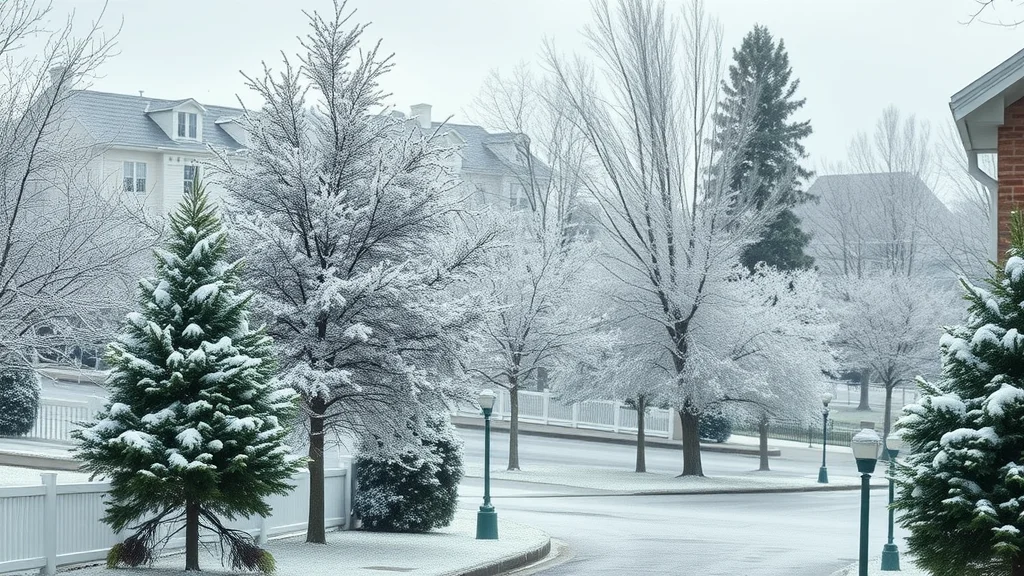

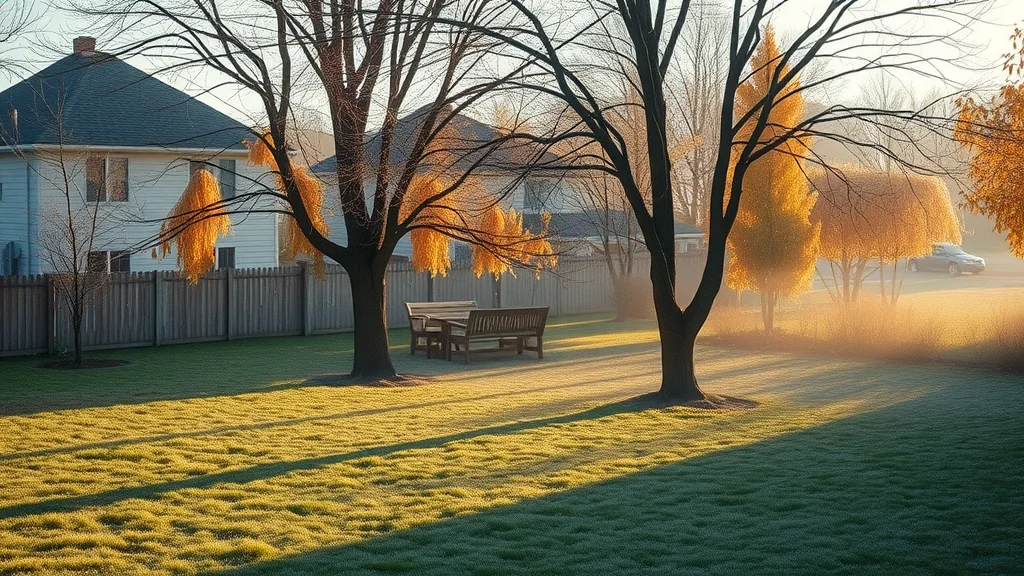
Write A Comment